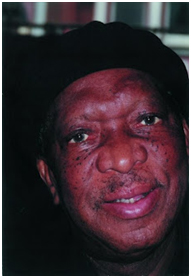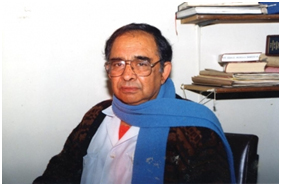The Society of Young Africa (SOYA) held its opening conference on 20th December 1951. Led by I. B. Tabata, SOYA was closely linked to the Non European Unity Movement (NEUM). Addressing the first conference, Tabata emphasised the critical need to create an organisation that could become a think tank of the resistance movement. Thus, SOYA was formed as an intellectual vehicle to mobilise students at universities and high schools, as well as young workers. The slogan of SOYA – ‘We fight Ideas with Ideas’ – evidently reflected an organisation that emphasised the intellectual development of youth who would contribute to the struggle through debate.
Two years earlier the African National Congress (ANC) had adopted its Programme of Action. Phyllis Ntantala noted: ‘The Society of Young Africa (SOYA) was a youth organisation, mostly African, launched ”¦ to counter the rabid racism of the Youth League with its slogan “Africa for the Africans”.’ SOYA propagated non-racialism, reflected in Tabata’s statement: ‘Our test is: whether or not a man applies non-collaboration. Questions of colour, race, sex or creed do not enter.’
Tabata called upon SOYA to rethink the role of Non-Europeans in an emerging society. He appealed to Non-Europeans to no longer ‘see themselves as a problem to be solved. On the contrary, it is they [the youth] who have to solve the problem of South Africa .... They see themselves as faced with the task of Building a Nation, a healthy, virile nation.’ Tabata appealed to ‘the Soyan youth to integrate themselves with the movement for liberation, draw sustenance from it, expand their intellectual horizon and in turn make their contribution to the movement’.
Tabata believed it was SOYA’s role to educate ‘the wider sections of the people on the two-fold nature of oppression: national oppression and class exploitation’. Probably thinking ahead of his time, he told delegates that ‘it is generally recognised that Non-Europeans are oppressed as nationalities and most people see the struggle simply as between the oppressed Non-Europeans and the White oppressor. It is not so commonly realised that there is another and more fundamenÂtal form of oppression, namely, class exploitation.’
 Dan Mokonyane, a member of SOYA, from www.danmokonyane.blogspot.com
Dan Mokonyane, a member of SOYA, from www.danmokonyane.blogspot.com
SOYA spread rapidly in African colleges, schools and townships. Branches were set up in Fort Hare, Healdtown, Lovedale, Queenstown and Lady Frere. The organisation also set up branches across the country, working closely with other organisations. For instance, in Transkei SOYA established branches and aligned itself with peasant organisations such as Ikhongo and Makhuluspan. A leaflet entitled uKwayo isiKrweqe ne Khakha, published by SOYA, was distributed among peasant communities. SOYA also co-operated with the Cape African Teachers Association (CATA), distributing the organisation’s leaflets.
During the Bus boycott in Johannesburg, some members of SOYA led by Dan Mokonyane and Sobantu Mlonzi worked closely with local organisations and people in the campaign. On 18 May 1953 the superintendent informed the Advisory Board of the Native Affairs Department that SOYA had been holding secret meetings in Sharpeville since 1952. At one such meeting, SOYA was mobilising support for the boycott of Queen Elizabeth II’s coronation. The government was so concerned about SOYA’s activities in Sharpeville that meetings of the branch were forbidden by the location superintendent from July 1953.
In Cape Town, SOYA attracted a number of young people who became leading figures in their fields. When the idea of launching the African Peoples Democratic Union (APDU) – a mass-based movement for the Unity Movement – was mooted, it was brought to the SOYA branch in the Western Cape.
By 1960, SOYA had spread to the townships, the University of Cape Town (UCT) and other educational institutions – with an estimated membership of 100 people. Kwezi Tshangana and Kader Hassim were two known members of SOYA in the Western Cape.
 Kader Hassim, another leading figure in the Unity Movement was also a member of SOYA. Photograph: The Witness, From www.witness.co.za
Kader Hassim, another leading figure in the Unity Movement was also a member of SOYA. Photograph: The Witness, From www.witness.co.za
By the mid-to-late 1950s SOYA was wracked by internal problems, and debates among members became more acrimonious. Sastri Mda, who was the secretary of SOYA, was suspended for allegedly using Marxist terms in his writings – a practice which could have led to the organization being banned under the Suppression of Communism Act (1950). Then, in December 1958, SOYA and the New Era Fellowship (NEF) were expelled from the AAC annual conference, prompting a walk-out by the Anti-Colored Affairs Department (Anti-CAD) representatives.
The political campaigns leading up to the Sharpeville massacre seem to have brought thorny issues to the fore. Before the decade came to an end, the Pan Africanist Congress (PAC) was established in 1959 after its members split from the ANC. This split seems to have been provoked by differences over the extent of collaboration between Africans and other race groups in the struggle against apartheid.
The banning of the ANC and PAC in 1960 forced the organisations underground, and they adopted armed struggle, abandoning peaceful negotiations with the apartheid government. In December 1961 the ANC’s military wing Umkhonto we Sizwe (MK) was launched. With all overt political activity being suppressed throughout the 1960s, the NEUM also became dormant. Some of its influential leaders were arrested, charged and given long-term prison sentences. In 1961 the NEUM, of which SOYA was an affiliate, underwent a split. With the socio-political environment poisoned by the aftermath of the Sharpeville Massacre, Tabata launched APDUSA (the African Peoples Democratic Union of South Africa) to replace SOYA.
When many of the Unity Movement’s imprisoned leaders were released almost a decade later in the mid-1970s, they continued to exert an influence in shaping the ideas of major political parties. Many, like Neville Alexandra, became active in AZAPO, the only overt political organisation before the formation of the United Democratic Front (UDF) in 1983. And it was the influence of these NEUM members in AZAPO, some observers believe, that led to AZAPO’s break-up and the formation of the UDF, which immediately adopted the Freedom Charter.
Conclusion
SOYA, as Tabata so eloquently explained at its first conference in 1951, was given the responsibility of developing and refining ideas that would shape the conduct of the struggle against apartheid. It was established as a political initiative of the NEUM. SOYA appears to have been largely influenced by Marxist ideas, emphasising the primacy of capitalist exploitation over racial oppression. It is these ideas, largely incorporated into the Freedom Charter, which informed and continue to inform the ANC’s policies. The role of the NEUM, and probably of SOYA in the background, has been largely ignored in the literature on the history of the liberation struggle.

